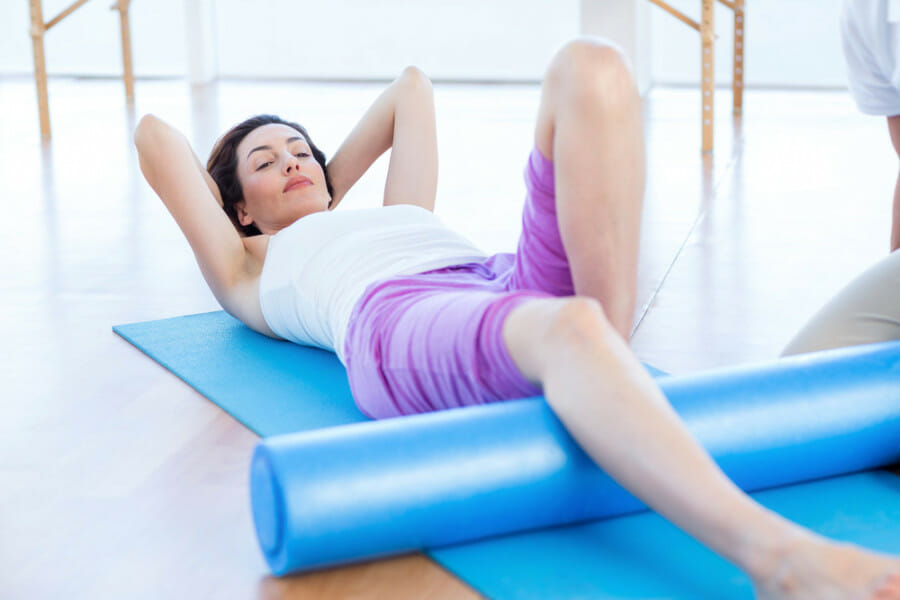Relieve Knee Pain with Foam Roller in 3 Different Ways in 10 Minutes
Many people often suggest foam rolling to relieve knee pain. However, according to a fascia release expert, Julia Blackwell, rolling back and forth along your IT band or calves is usually ineffective at loosening up fascia and treating knee pain.
Fortunately, Blackwell recommends three other ways to use a foam roller to alleviate knee pain. The new approach might seem intense, but it only takes roughly 10 minutes to complete.
What is the Biological “Fabric” Holding the Body Together?
Blackwell describes fascia as the biological “fabric” or connective tissue that encases every muscle fiber, muscle group, ligament, tendon, bone, nerve, blood vessel, and organ in the body. The fascia organizes the body into its physical form.
The health of the fascia is determined by the amount of mobility it has been allowed by the extracellular fluid within it. This fluid hydrates all the tissues, nourishes the cells, allows the joints and muscles to move seamlessly, and absorbs shock.
What Causes Knee Pain When it Comes to Fascia?
According to Blackwell, knee pain arises when some areas of the fascia get dehydrated and restricted, leading to the loss of hydration of the extracellular fluid responsible for cushioning our joints. The fascia can lose its hydration due to overuse, working at a desk, modern lifestyle, running, squatting, and not moving enough.
How Can Foam Rolling Solve Knee Pain?
Foaming rolling can help restore the health of fascia, even if the knee pain has been persistent for a long time. To achieve this, a comprehensive approach consisting of compression, cross-fibering, and active movements can be used. Rolling on a foam roller can encourage a massive fluid exchange into the extracellular fluid, which helps hydrate the dry fascia. Foam rolling also activates the fasciacytes, which stimulate the production of critical components such as hyaluronic acid.
How to Properly Use a Foam Roller to Treat Knee Pain?
Julia Blackwell recommends three foam-rolling techniques to aid in lubricating the fascia and decrease knee pain.
Calves
This technique involves sitting on the floor with your left calf muscle on top of the roller. Cross your right leg over your left leg for added compression and slowly point and flex your toes. Then circle your ankle, turning your leg to the inside and outside, and do this ten times. Repeat on the right leg.
Quads
To perform this technique, get down into a forearm plank position with both of your quads on your roller. With your toes flexed, slowly curl your knees towards your butt until you reach a 90-degree angle and slowly straighten your leg. Rock your heels from side to side and do this ten times. Repeat on the opposite side.
IT Bands
For this technique, come down into a side plank position with the roller on the side of your left thigh about three inches above the knee joint. Flex your left toes and slowly bend your knee back towards your butt until you reach a 90-degree angle. Raise your heel towards the ceiling and then towards the floor, rock up and down three times and repeat on the opposite side.
Blackwell recommends performing these techniques every day or every other day, depending on how your body reacts to the treatment and the level of soreness you experience. She advises that the results of these techniques are much faster than normal foam rolling methods.














